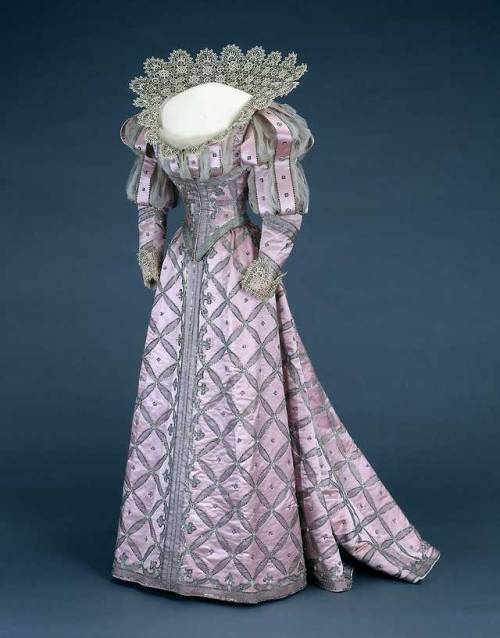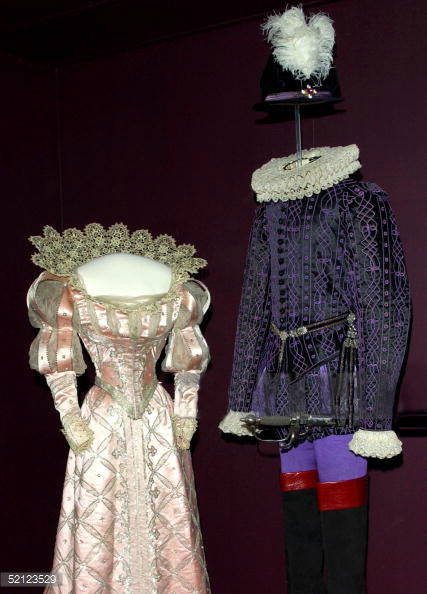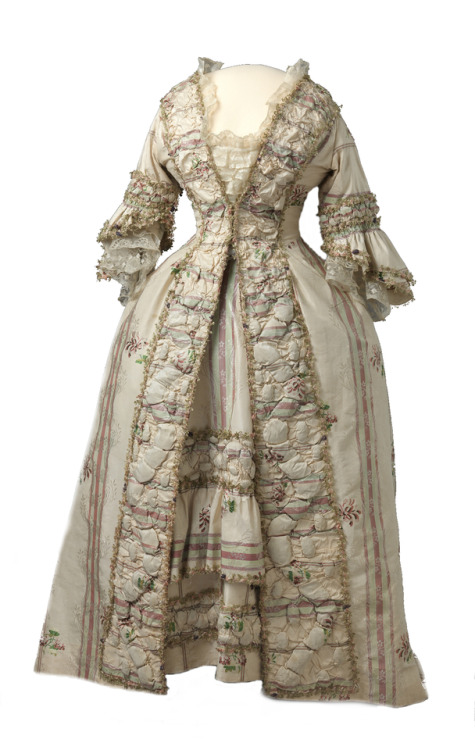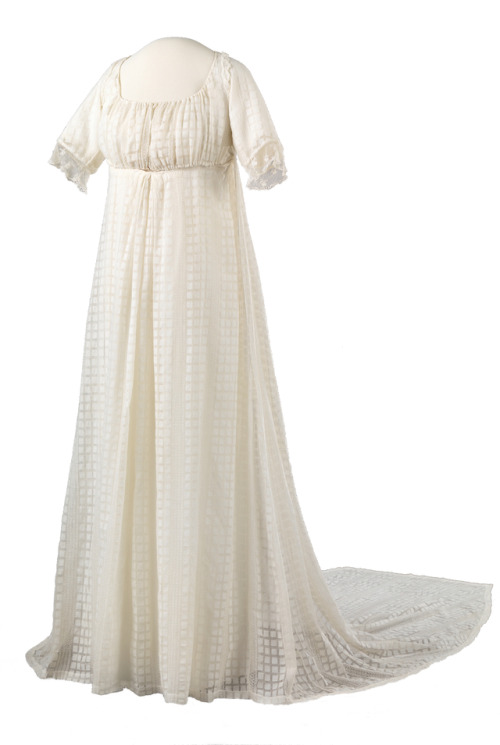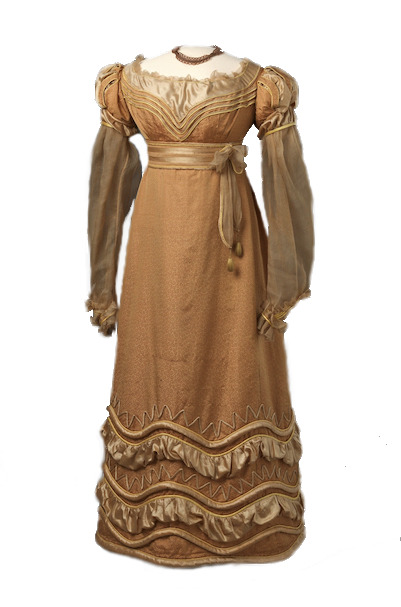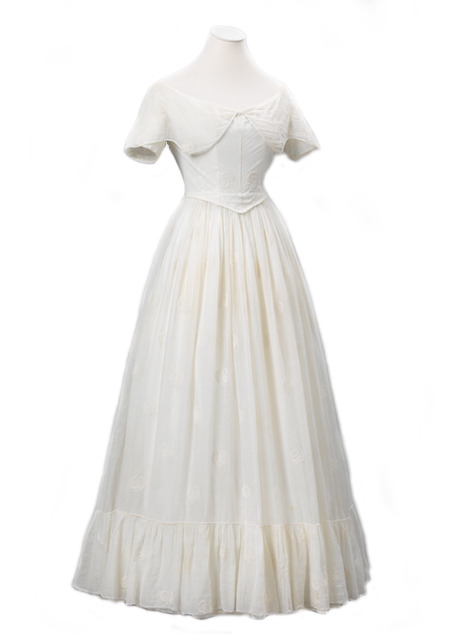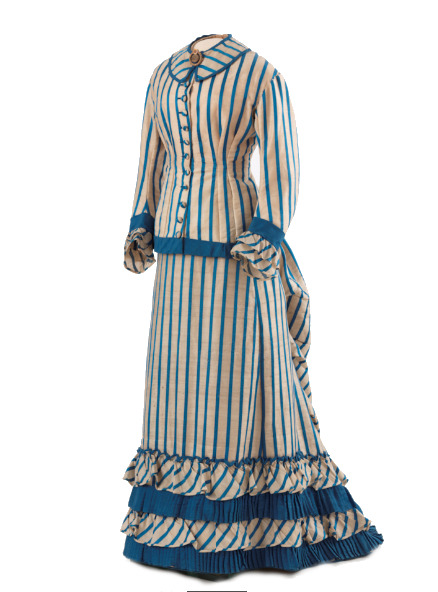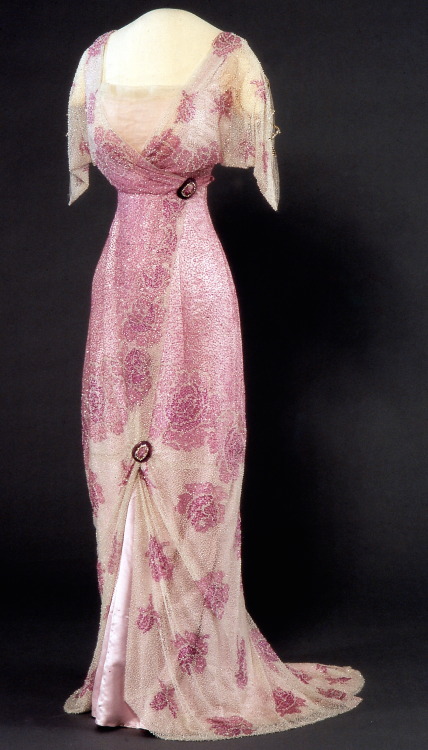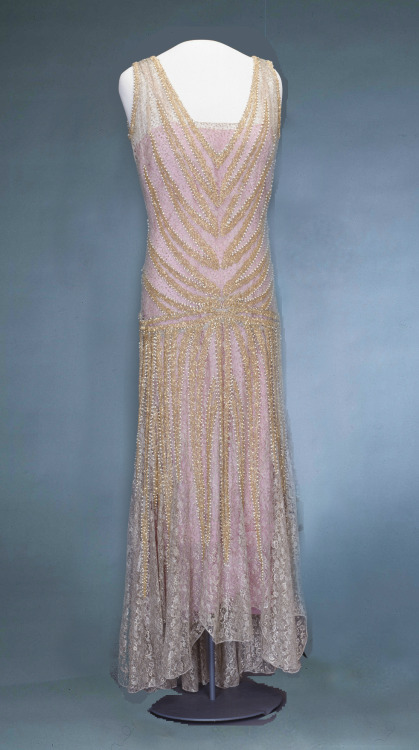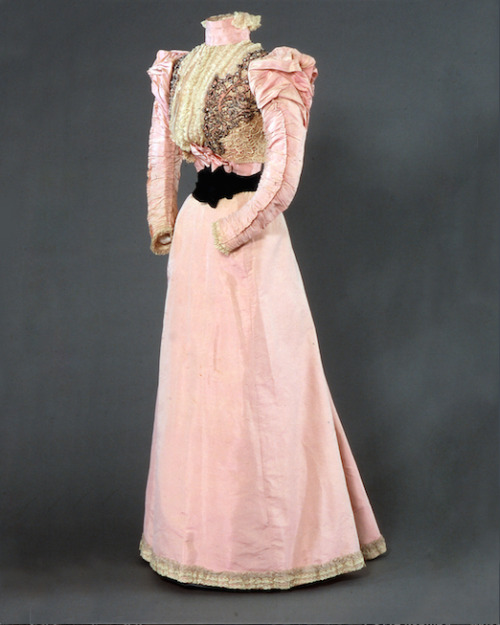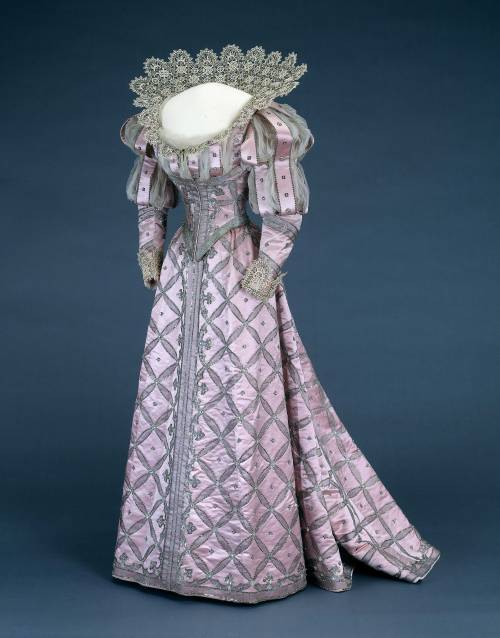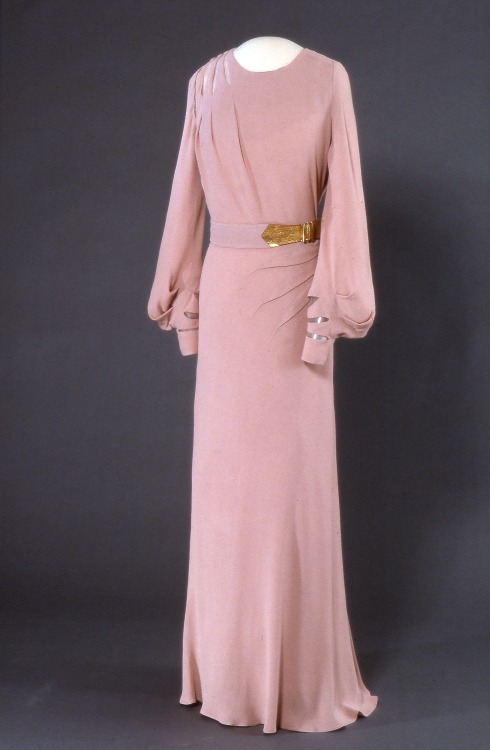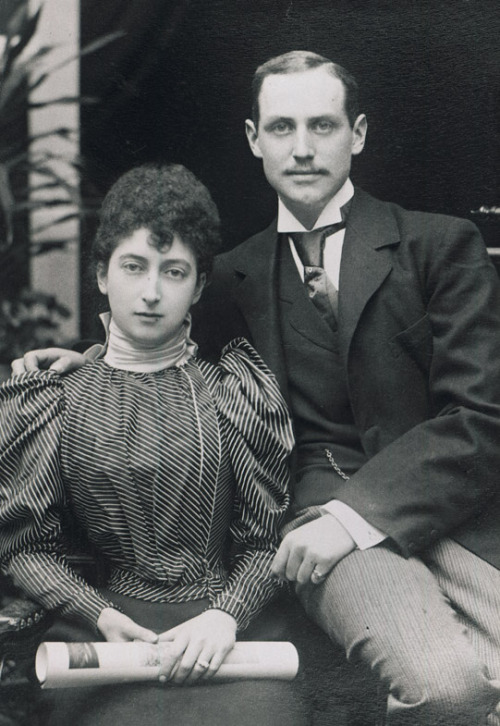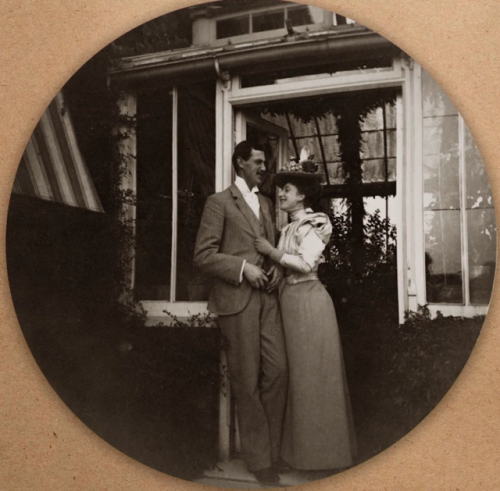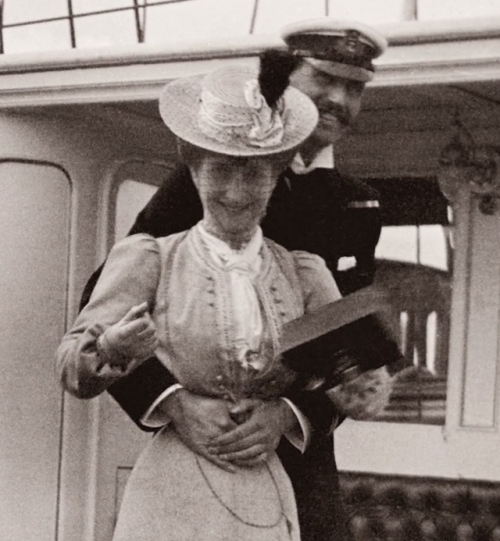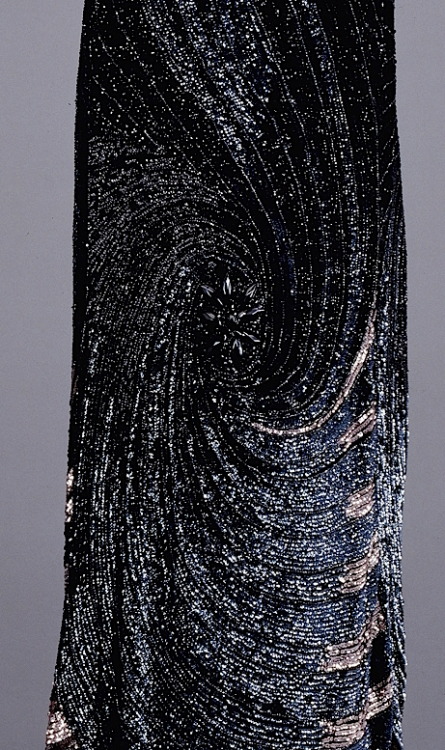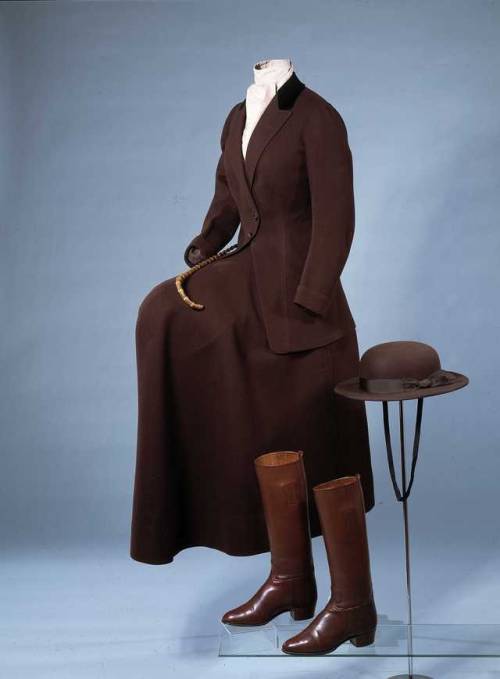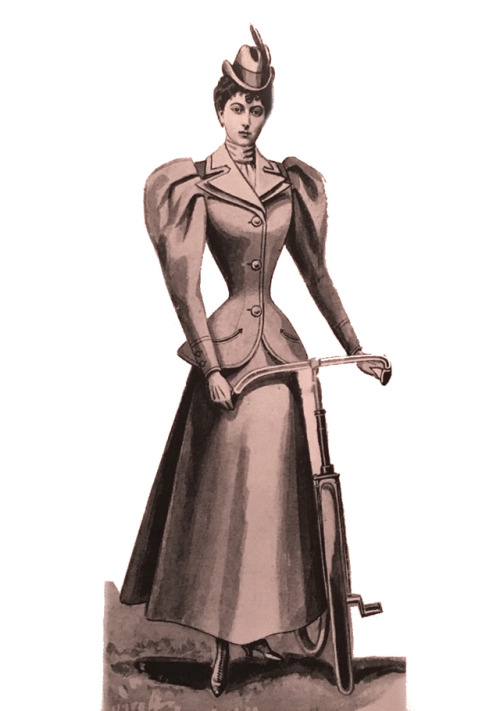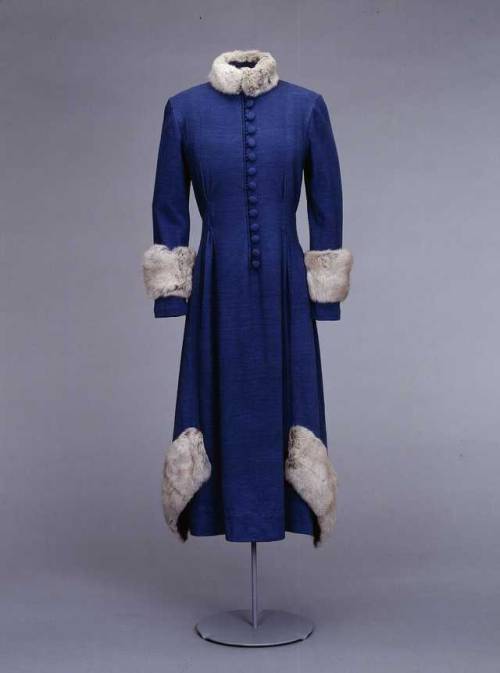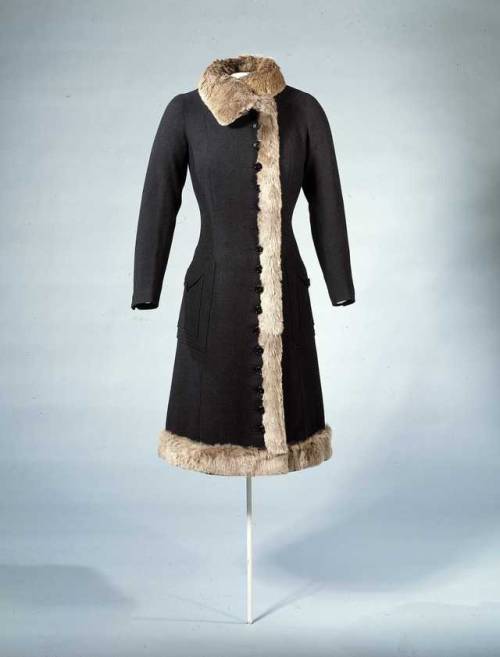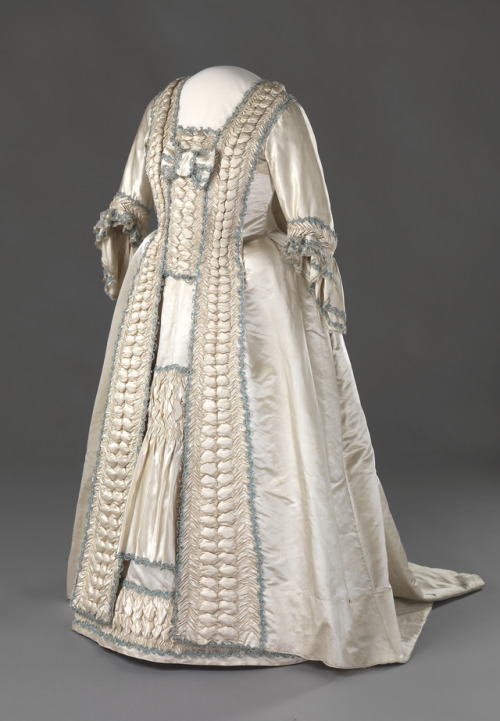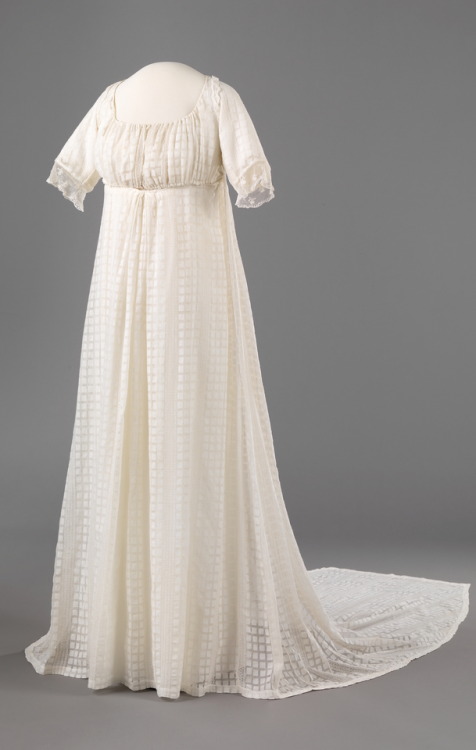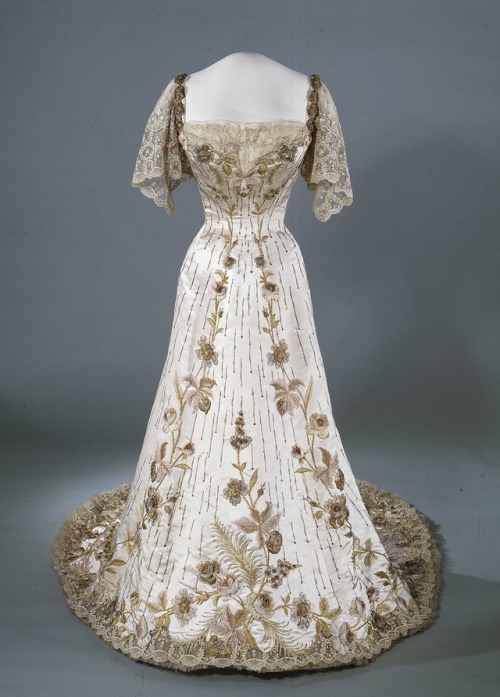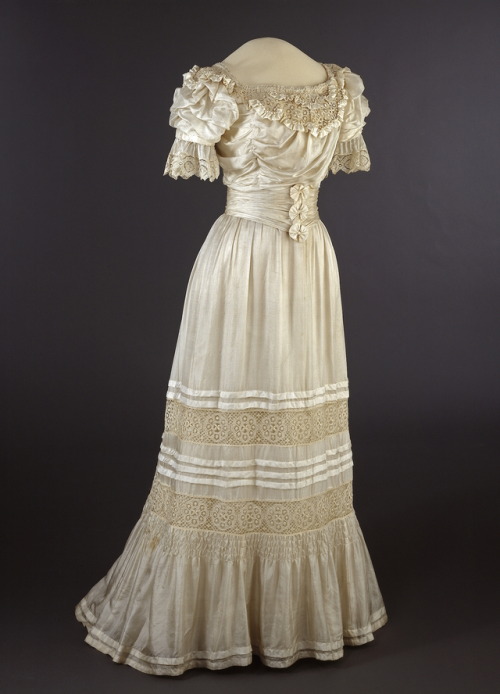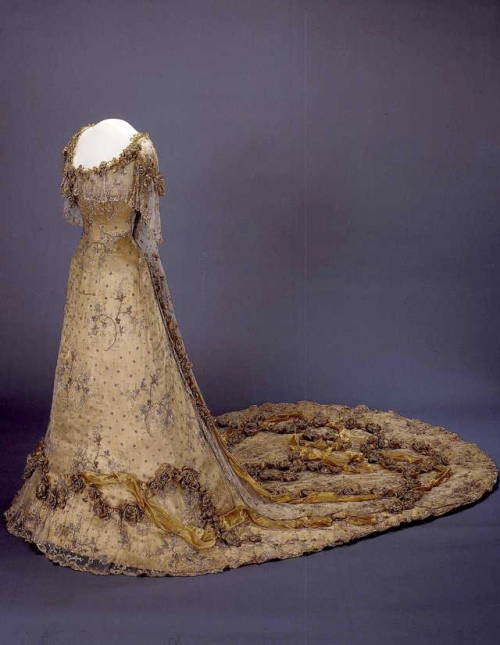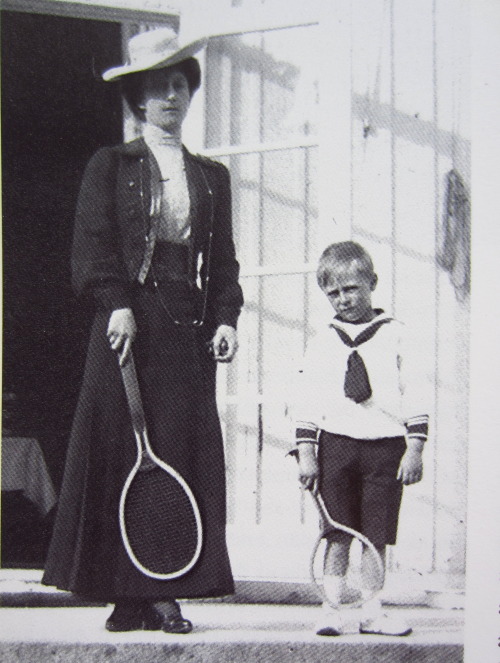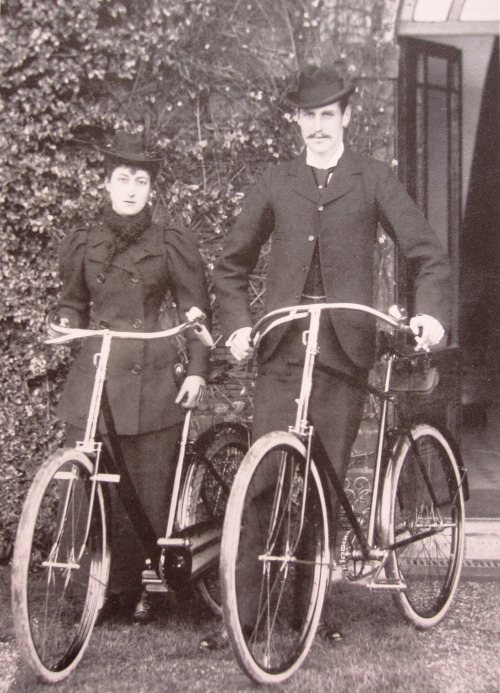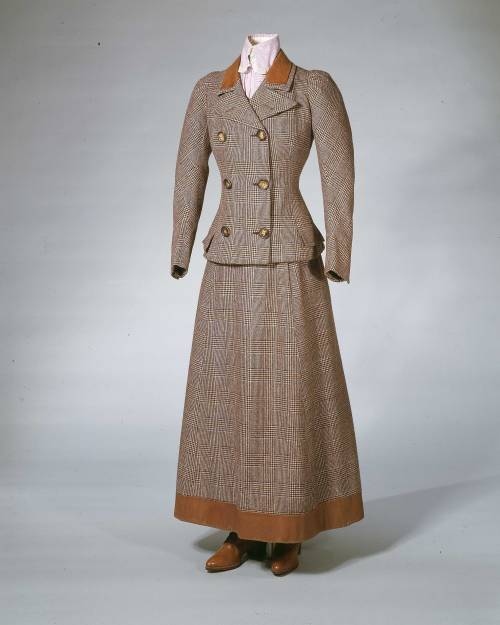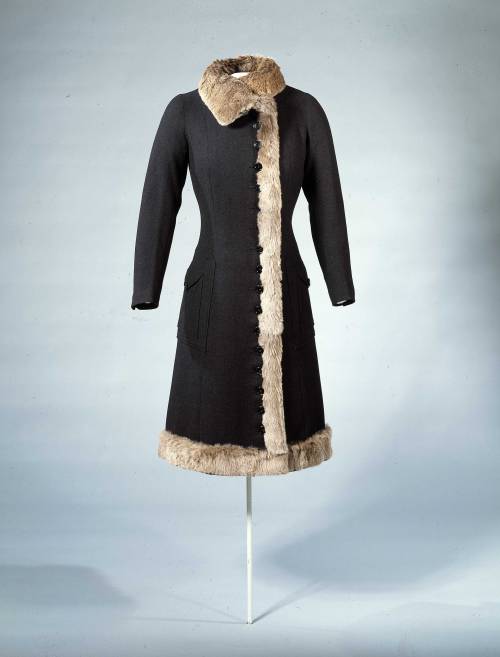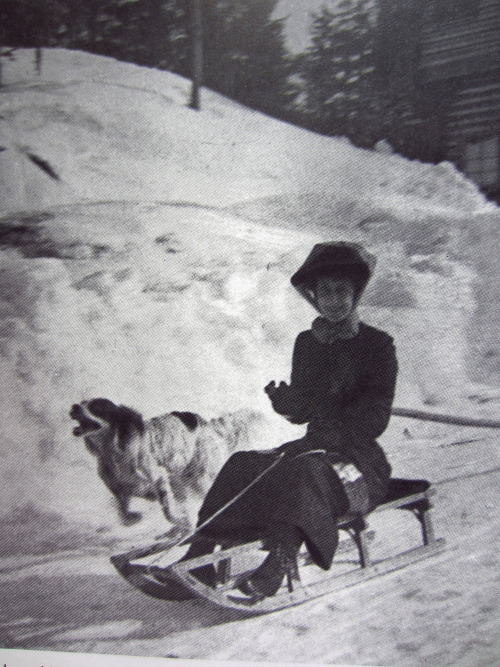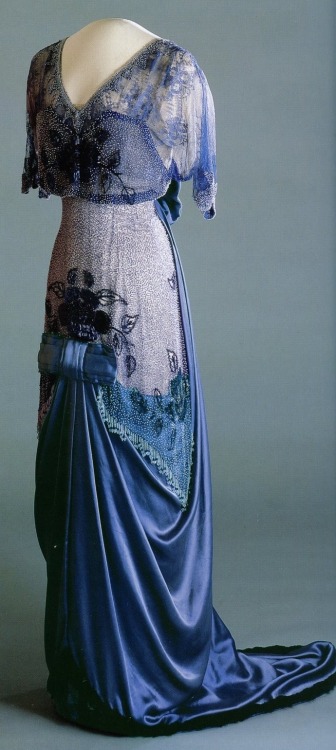#queen maud
Costumes worn by Prince Carl (later king Haakon of Norway), princess Maud (later queen Maud of Norway) and princess Victoria, photographed by Lafayette on July 2, 1897, and two of the attires worn. The Lafayette photo comes from the Royal Archives at Windsor.
The occasion was a grand fancy dress ball hosted in London by the Duchess of Devonshire, in honour of queen Victoria’s 1897 Jubilee. Whereas the queen herself was not at the ball, many of her closest family members were.
The theme of the ball was allegorical or historical (pre 1815) figures. The Prince of Wales, later king Edward VII, came as grand prior of “The Order of St. John of Jerusalem”, while his wife Alexandra came as the French Renaissance queen Marguerite de Valois.
Their daughers were dressed as Renaissance ladies-in-waiting to the “Marguerite de Valois”, in similar corseted, slashed and collared dresses, while Danish prince Carl appeared as a Danish Renaissance courtier. I have never been able to find out the colour of princess Victoria’s dress. But the garments of her sister and brother in law were predominantely pink, purple and metallic. This we know because their attires are wonderfully preserved!
Princess Maud’s attire was made by French Morin-Blossier. The main fabric is a pink silk satin, appliquéed with sheer silk fabric in a diagonal pattern. The silk has then been embellished with silvery sequins and beads. In addition there’s paned sleeves and bodice details with the same sheer silk poking through, and a Recitella-style standing collar and cuffs.
It is not known who made prince Carl’s attire. But it is made of a black silk satin elaborately embroidered with silk and beads. In addition elastic purple hoses of wool and silk, thigh-high black boots, lace collar and cuffs, and a merallic belt with sword. And not to forget the matching tall, plumed hat. To look the part, the prince even wore a fake beard, to get the proper Renaissance look!
Today the costumes are is in the care of The National Museum in Oslo (OK-1991-0256 and OK-1991-0251).
Post link
Evolution in women’s fashion in Europe, 1770s to 1910s
All attires from The National Museum in Oslo
Post link
Queen Maud + pink
Of the wardrobe today in The National Museum in Oslo, a predominantely large part of the dresses are pink. It’s said to have been Queen Maud’d favourite colour, especially the more beige dominated borderlining “deadleaf”, the big hit colour of the 1930s. Pink is present in her wedding trousseau, in her exquisite 1897 fancy dress, in day dresses and in gala gowns. Here’s some favourites (all in the care of The National Museum in Oslo).
Post link
Princess Maud of Wales + prince Carl of Denmark: a love story
(they were later to become the king and queen of Norway)
Post link
There’s black dresses, and there’s BLACK DRESSES!
From Queen Maud’s wardrobe, unknown French or British designer, 1818 and 1820. Today in the care of The National Museum in Oslo (OK-1991-0206).
Post link
Queen Maud + sports
When then Princess Maud of Wales married in 1896, her trousseau (I.E. her new wardrobe) was discussed in detail in the press. Some magazines was surprised by the amount of “sportswear” and the lack of grand robes, especially considering her mother Alexandra being one of the absolute fashion icons of the time, and she was known for a more opulent style.
The love for sports would be vital in Queen Maud’s life. She was one of the first of the British royal family to ride a bike in public, and she loved riding, skating and tennis. When she became the queen of Norway in 1906, she immediately learned skiing, toboganning and other winter sports. When staying at the royal winter residence, she usually went skiing twice a day.
But for all these activities she used skirts, and always rode side-saddle. Not until the 1930s does skiing trousers appear in her wardrobe. She was surprisingly fit and muscular due to her active lifestyle, and can be seen in many a sleeveless gala gown in the 1930s - she was then well into her 60s.
From top left:
- Riding attire for side saddle, 1920-26. Made by Busvine & Co ( X)
- Queen Maud riding at Bygdø in Oslo, 1910-15
- Riding attire for side saddle, early 1920s. Made by Busvine & Co ( X)
- Description of Maud’s trousseau from “The Queen, 1896
- Then princess Maud, newly wed, biking at Sandringham, 1896
- Sports suit, 1896, part of Maud’s trousseau. Made by Vernon ( X)
- Knitted wool coat trimmed with fur, ca. 1920 ( X)
- Queen Maud skiing in Oslo, 1927-35 sometime
- Wool coat trimmed with fur, late 1920s ( X)
As a bonus: here’s Queen Maud’s ice skates and roller skates from around 1900. They’re essentially sports boots with a separate metal bottom screwed or strapped on the boots. And yeah, high heels were essential.

Post link
White gowns from The National Museum in Oslo
- Robe a la Francaise, 1779
- Crinoline gown, originally from 1770-90, remodeled 1840s
- Robe a la Francaise, 1780-90
- Regency gown, 1795-1805
- Regency gown, 1809
- Evening dress for a young girl, 1840s
- Gala gown worn by Queen Maud, early 1900s
- Silk dress made by Steen & Strøm, 1906
- Gala gown worn by Queen Maud, 1912
Post link
Left:Queen Maud’s coronation soirée dress, 1906. Made of gold lamé covered with gold lace, and decorated with diamanté, pearls and garlands of silk roses and leafs. The gala gown was made by Morin-Blossier in Paris ( X)
Right:The magazine L’Art et la Mode describing what Queen Maud wore under a state visit to France in June 1907. The golden Morrin-Blossier dress was worn for a dinner event at Elysée, and it looks like she also wore silk gloves, a metallic choker and a feather ornament in her hair. This depiction shows the dress in its original state; with puffed sleeves, while the current dress shows a lighter lace drape. This is a later alternation. The golden Morin-Blossier dress is described as follows:
“Pour le diner a l'Elysée. Robe fourreau en drap d'or, recouverte de dentelle dans le ton; teintée d'or et rebrodée de perles et briliants. Guirlande très en relief de roses de differents ors“
(For dinner at the Elysée. Fitted dress of a golden fabric, covered with matching gold lace and embroidered with pearls and briliants. Very raised garland of roses of different gold shades)
Post link
The less familiar side of Queen Maud of Norway: sports
“Everyone” is familiar with her impeccable style, her slender waist and her royal background. Less known is her absolute love for sports. She’s said to have been one of the first in the British monarchy to bike in public, and biking was also a favourite activity of the just-engaged Maud and Carl (later king Haakon). Maud furthermore loved horse riding, ice skating, skiing, slleighrides, tennis etc, and encouraged her son, future king Olav, to embrace sports. He got as far as winning an Olympic medal in sailing in 1928.
Although much of the surviving wardrobe from queen Maud contains evening gowns and gala attires, there’s also traces of her sporty side. Sport coats,tailor-mades,sport dresses,ice skates,roller skates,knitted sweaters and fur-lined coatsandboots can be seen in the collection in the care of The National Museum in Oslo. Multiple private photos also exists.
Post link
Now that there are officially two-and-a-half days to go before Princess Ingrid Alexandra turns 18, the countdown to when she will make her official tiara debut, and debate over which tiara will be the first one she wears, is on.
In no particular order, here are my top four picks for Ingrid Alexandra’s first tiara:
The Vifte Tiara
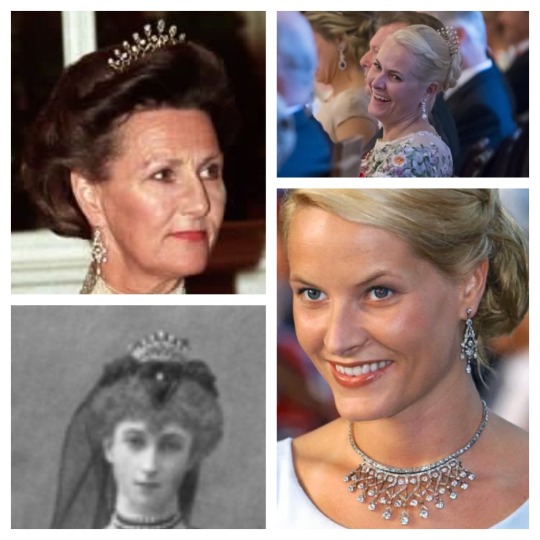
The sole tiara on this list to come from Ingrid’s British ancestors, the Vifte tiara was a wedding gift from the Rothschild family to Queen Maud. Its name comes from the fact that it resembles a fan, or vifte in Norwegian. Made of diamonds set in silver and gold, the tiara can be worn either as a tiara or as a necklace. Queen Sonja inherited the tiara when she married King Harald in 1968, and she passed it down to her daughter-in-law Crown Princess Mette-Marit shortly before her wedding to Crown Prince Haakon in 2001. Mette-Marit has worn this as a tiara exactly once, during the 80th birthday celebrations in honor of Harald and Sonja in 2017. Since Mette-Marit favors her other tiaras, maybe she will pass this along to Ingrid so it can get some more love.
The Vasa Tiara

This tiara was a wedding gift from the people of Stockholm to Princess Märtha when she left home to marry Crown Prince Olav in 1929. Known as the Vasa tiara due to its central elements evoking the sigil of the House of Vasa, a former ruling family of Sweden, it was one of Crown Princess Märtha’s favorite tiaras. She shared it with her daughters, Princesses Ragnhild and Astrid, and after Märtha’s death in 1954 and her Harald’s marriage 14 years later, Princess Astrid became the sole wearer of the tiara. Astrid has stated that she considered the tiara to be a lifetime loan, and it will go back to the main line of the royal family after her death. She has already begun passing along some valuable family history to Ingrid with her gift of the badge of the Order of Victoria and Albert that belonged to Queen Maud for Ingrid’s confirmation - maybe she will pass the Vasa along as an 18th birthday present to her great-niece, so she can enjoy seeing her beloved mother’s tiara on the head of a future queen before she passes.
The Amethyst Necklace Tiara

This tiara, made of amethysts, can be worn as a necklace and a tiara, hence its name. The origins of this tiara are still unknown; depending on the source it was a gift from King Harald to Queen Sonja, or it was Garrard’s “we’re sorry your tiara was stolen” gift following the theft of Queen Maud’s Diamond and Pearl Tiara. Queen Sonja has worn it as a tiara and a necklace, and passed it along to Crown Princess Mette-Marit in 2004, likely as a push present following the birth of Ingrid Alexandra. Mette-Marit has also loaned this tiara out to her sister-in-law, Princess Märtha Louise, for the 2010 wedding of Crown Princess Victoria and Prince Daniel and the 2021 Dutch State Visit to Norway. Maxima passed along her push present from Willem-Alexander following the birth of their heir to Amalia for her 18th birthday; maybe Mette-Marit will take some inspiration from her Dutch friend and pass this tiara to Ingrid.
A Brand New Tiara
A recent tradition has been to gift princesses turning 18 or marrying into the family a brand new tiara. King Olav began this when he gifted a brand-new tiara to Princess Märtha Louise on her 18th birthday in 1989, and King Harald and Queen Sonja continued the tradition, giving Crown Princess Mette-Marit the Diamond Daisy Tiara when she married Crown Prince Haakon in 2001. Both of these tiaras have come from Norwegian court favorite Garrard, and I don’t see Harald and Sonja going to a different jeweler for something as important as their heir’s 18th birthday tiara. It would be interesting to see what comes out of the Garrard vaults for Ingrid!
Other Tiara Options
- Queen Maud’s Pearl Necklace Tiara
- The base of the Maltese Cross Tiara
- The small version of the replica of Queen Maud’s Diamond and Pearl Tiara
- TheDiamond Daisy Tiara.

